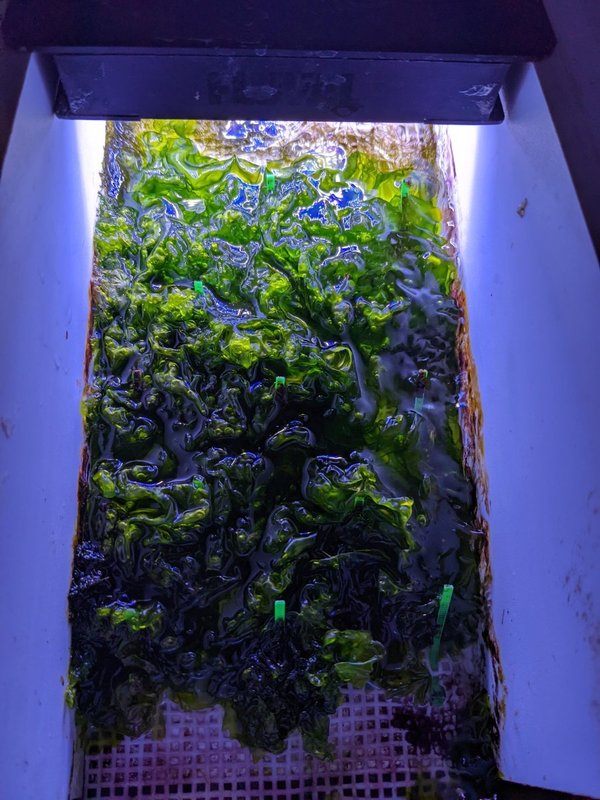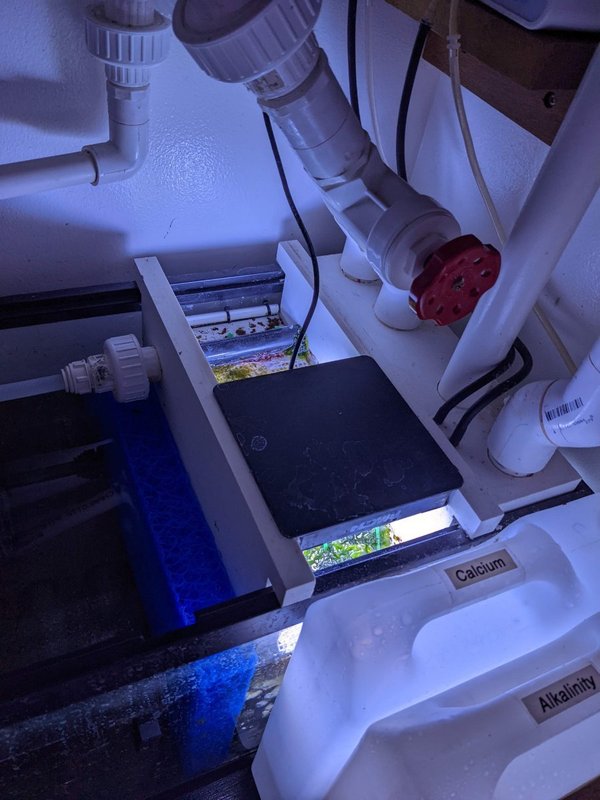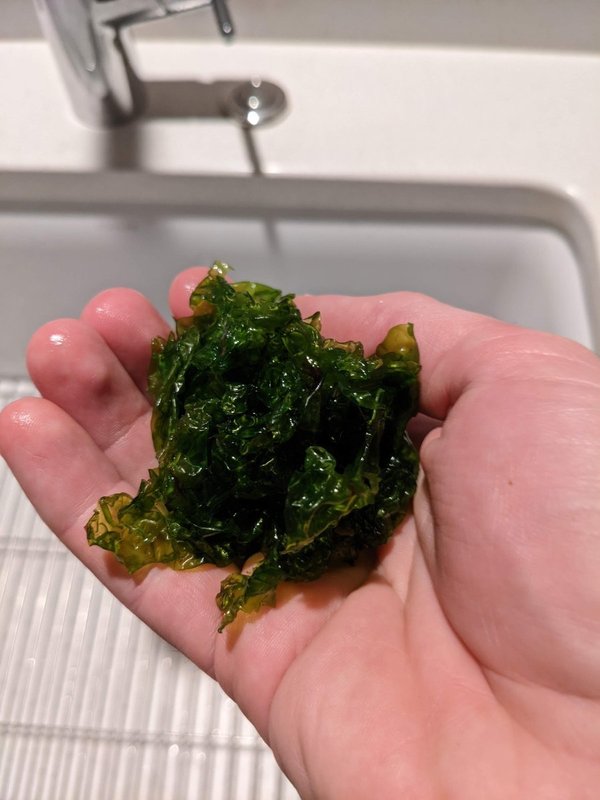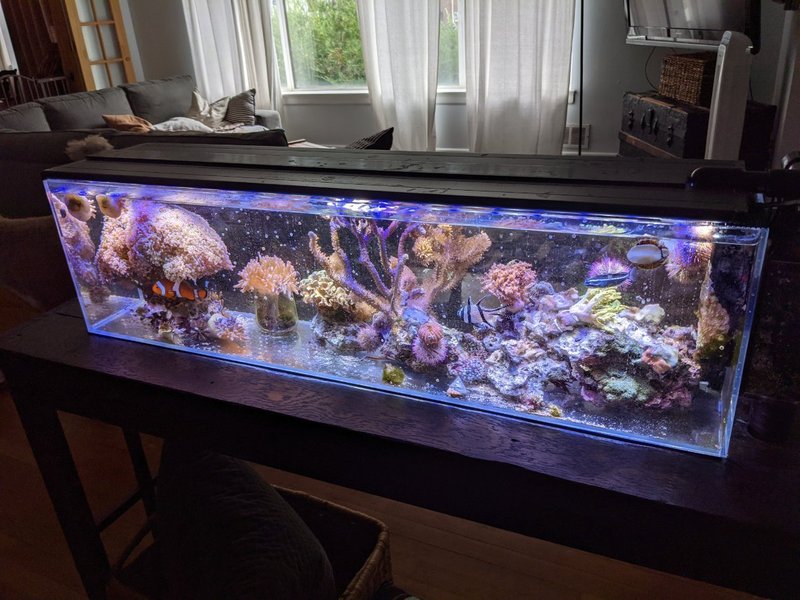
ScooterTDI
BB Participant-
Posts
242 -
Joined
-
Last visited
ScooterTDI's Achievements

Tang (6/13)
-
I shut down my aquarium a while ago. I stopped breeding them after a couple of batches. Once I had a working protocol, it seemed fairly easy and the broodstock are quite prolific, but it just required a lot of time and attention. The biggest challenge is that the males start fighting once the get to be a little over an inch and require some kind of system to separate them until they grow out to a salable size. Unfortunately, they are small enough to get through most divider materials (except sponges) in a conventional small cube divided setup that you see at most petstores.
-
Alternative to Powder Coating Steel stand
ScooterTDI replied to lynn.reef.nerd's topic in General Discussion
Epoxy paints were my first thought as well. Might even be more durable than powder coat if the surface is well-prepared. -
Yea, there are a number of problems with artemia. Mostly, they are too big for most species and don't swim "right" to entice feeding, but they are also deficient in DHA which has been found to be critical for early development of marine fish.
-
Nice! I often drool over Poma's angels. Alas, they don't offer any dwarf angels...
-
You should definitely play with the light intensity and extend the photoperiod. It also helps if the sides of the vessel are black for better contrast with copepods.
-
Maybe that was my problem with apocyclops.... I aerated them only slightly more than the parvo.
-
I don't think parvo are cannibalistic like some other calanoids. I never had any problem restarting cultures with sieving that retained adults. Make sure to feed VERY light. I would put my clear 1g culture vessels up against a white wall and if I could perceive any tint to the water I would not feed. I only fed enough that I could see a slight tint when against a white backdrop. It would normally look totally clear if it wasn't against a white backdrop. If the tint doesn't dissipate by the next feeding, the culture was usually due for a restart. Also keep the aeration very light at only maybe 1 bubble/sec. There is a good chance apocyclops alone will work, but I could never reliably maintain high production with them. I suspect Tigriopis won't work well. I tried them unsuccessfully with blue stripe pipefish a long time ago and I think they have a larger gape than mandarins. Good to have those around after settlement though. I'm keeping my fingers crossed for that last survivor from the original batch!!!
-
Yea, in my experience parvo is sensitive to water quality and algal density. When I was culturing them, I had the most success feeding very lightly twice a day and I would immediately sieve and restart the culture with a fresh batch of water if productivity declined. Usually, restarting the culture resulted in a substantial bloom. I probably restarted parvo cultures once a week. If I remember correctly, I was able to reliably harvest about 25% of the culture volume every day, so they cultures basically got a 25% water change daily.
-
This is great work! What are your approximately prey densities in the larval tank? Do you have any parvocalanus cultures going? I found the parvo cultures to be way more productive than apocyclops.
-
Looking amazing! I love how everything has carved out its own little space.
-
ScooterTDI's 12g Long Peninsula
ScooterTDI replied to ScooterTDI's topic in Dedicated Tank (Build) Forum
Added some coral to the tank in the fish closet this morning. Big shout out to Roni and Matt for the awesome frags! -
ScooterTDI's 12g Long Peninsula
ScooterTDI replied to ScooterTDI's topic in Dedicated Tank (Build) Forum
Thanks! Yea, I'm really digging the skunks. Not breeding anything now, but I might in the future. The pipefish we're a lot of work, so I got kind of burned out after months of caring for them. It was very rewarding though. My ocellaris clowns and molly miller blennies occasionally lay eggs, so I might give them a try. -
ScooterTDI's 12g Long Peninsula
ScooterTDI replied to ScooterTDI's topic in Dedicated Tank (Build) Forum
Well, the tank is 4 years old now, so I thought I'd give a update. I added sand a little while ago to the display and although I rarely purchase wild-caught fish, I bought a diamond goby to keep it clean. I really liked the aesthetic change. I also set up the former frag tank in the fish closet, but now it is just a second display for me to enjoy. I've recently added a pair of Biota mandarins, a Biota coral beauty, and a pair of ORA pink skunk clowns. My plan is to continue with softies for a while since I don't miss the frequent testing and and frequent preparation of calcium and alk dosing solutions that I had to do when it was hard coral dominated. I'm interested in tracking down some of the fancier soft coral varieties, but I'll probably still have a limited population of easy sps like encrusting/plating montis or pocillopora. As always, please excuse the dirty glass... -
I've been running a DIY algae scrubber that is a little unconventional since it is a "trough"-style scrubber and not a "waterfall" style scrubber. Originally I was cultivating typical hair/turf algae on a screen, but then ulva started to grow in the trough. At first, I considered it a bit of a nuisance since it didn't root firms to the screen and sheets would often slough off, but it was able to easily outcompete the turf algae on the scrubber. I decided to modify the scrubber to specifically cultivate ulva by weaving in a bunch of zip ties that project 1-2" out from the surface of the screen to catch and hold the ulva in place (seen as light green zipties poking out above the algae in the attached picture). This works fantastic now and everyday I remove a handful of ulva that I either toss out or feed to my urchins (daily harvest shown in attached picture). Basically all herbivores love ulva, so it makes a great food source if you have tangs, urchins, sea hares, etc. Just thought I'd share this since its been working so well for me. I see the following benefits: -Easier (and less messy) to harvest algae than scraping turf off a screen. All you have to do is grab a wad. -More efficient nutrient removal since it grows substantially faster than turf algae -Free food source -More consistent nutrient removal since you only removal a little at a time instead of scraping the screen clean as you would for turf algae. When growing turf algae, I found that algae growth in the display tank would fluctuate depending on how long it had been since I had cleaned the screen.
-
ScooterTDI's 12g Long Peninsula
ScooterTDI replied to ScooterTDI's topic in Dedicated Tank (Build) Forum
Thanks guys. Despite losing a bunch of coral, I see it as a positive. I had gotten a little bored with the tank and this is opportunity to re-engage with the hobby. I'm already having fun looking for soft corals that I've never kept before. I'll probably also consider some generally non-reef-safe fish that I wouldn't have previously paid any mind. Here is the current state of affairs after removing all the dead or struggling sps.


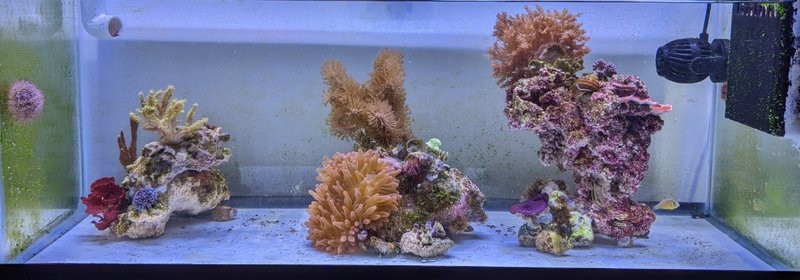
.thumb.jpg.e0535ecb4908c873a4bd7af7bb179dd6.jpg)
